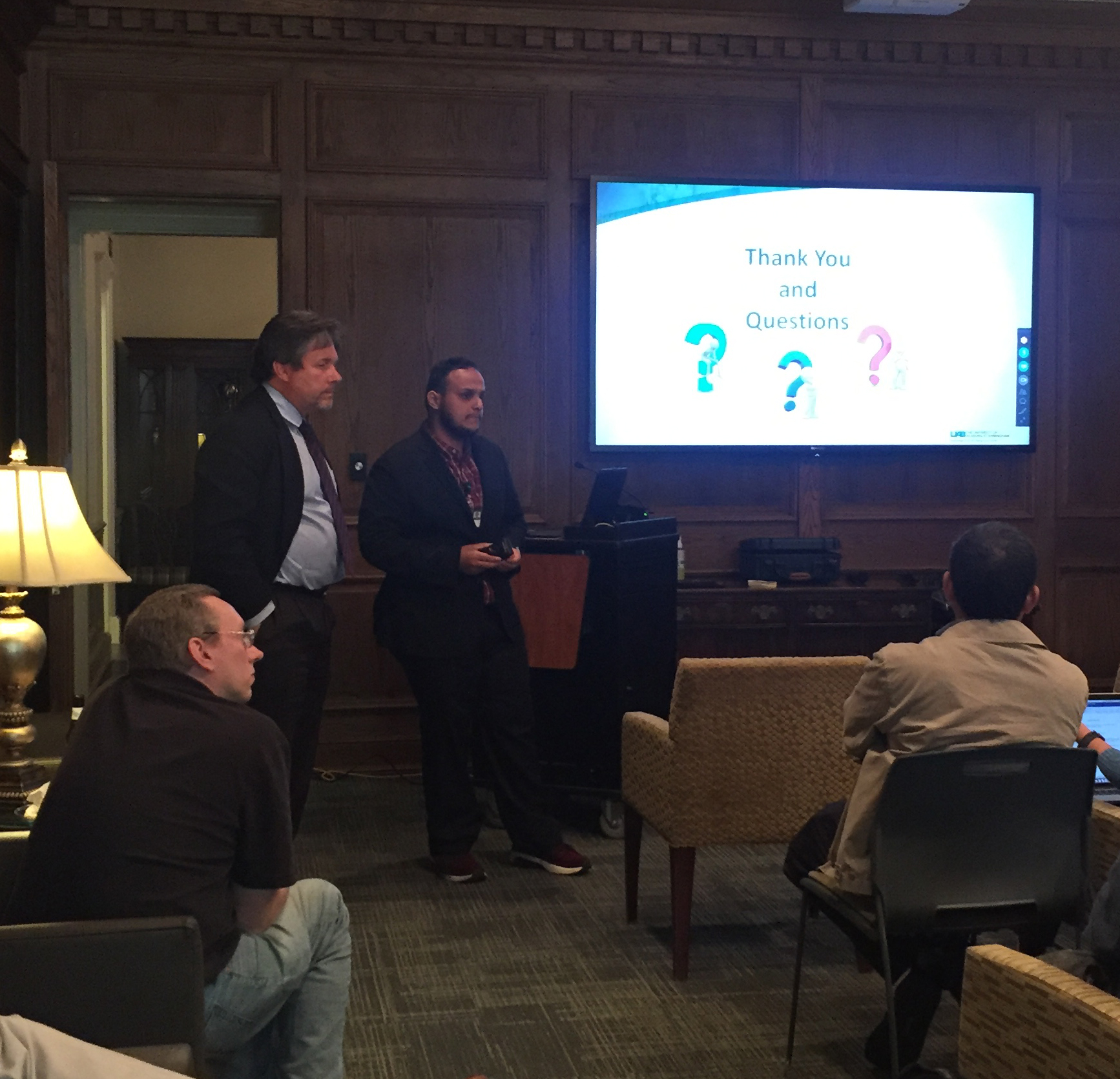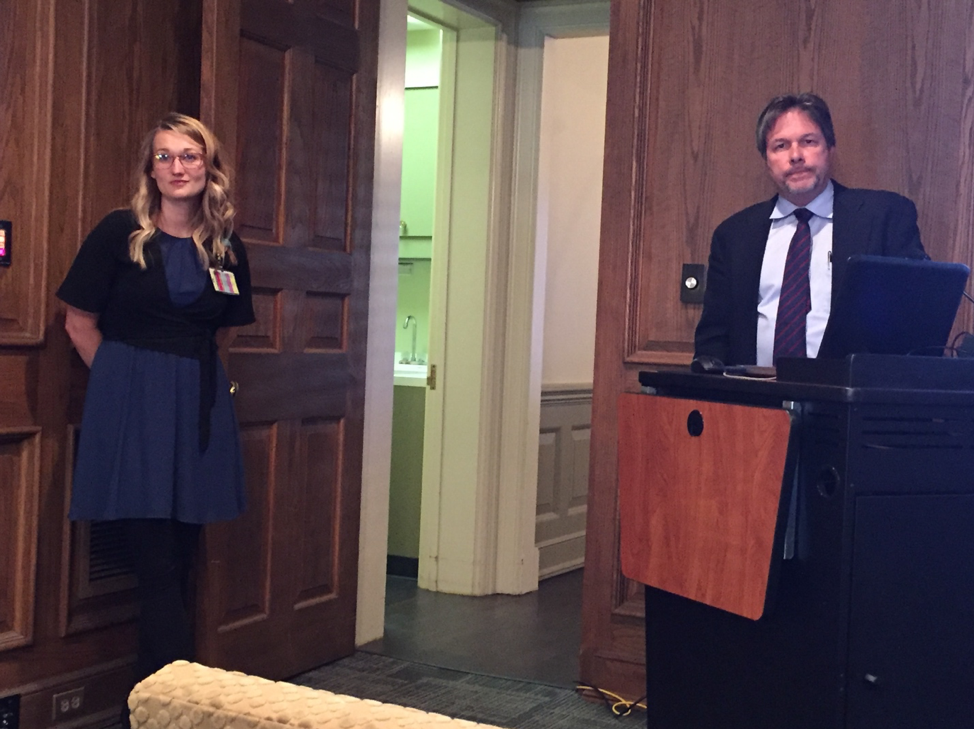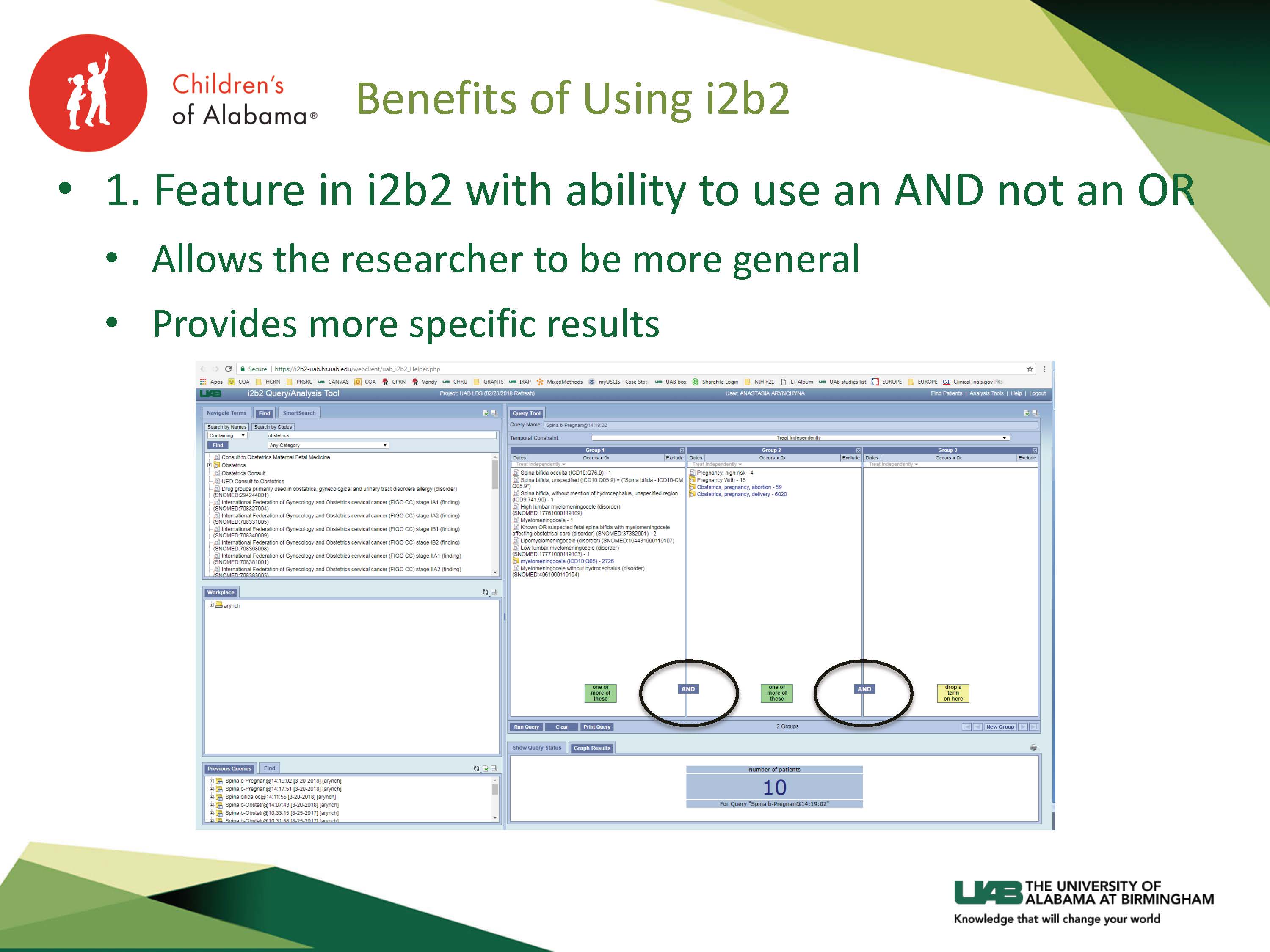What happens when smart people use the right tool to ask the right questions of Big Clinical Data? Attendees at our April Forum found out when three research teams presented the findings from i2b2-enabled searches of the clinical data in UAB’s electronic health record. CCTS Co-Director and UAB Informatics Institute Director Dr. James J. Cimino gave a brief overview of i2b2 then introduced the three research teams, all of which participated in the Inaugural i2b2 Abstract Contest in 2017.
 Abdullah Alanazi used i2b2 to generate data for a cross-sectional study comparing vaping and cigarettes in relation to illicit substance abuse.
Abdullah Alanazi used i2b2 to generate data for a cross-sectional study comparing vaping and cigarettes in relation to illicit substance abuse.
Abdullah M. Alanazi, MSc, RRT-NPS, Rehabilitation Science Program, UAB School of Health Professions, presented the findings from his cross-sectional study with Eric W. Ford, PhD, MPH, on “Substance Abuse and Smoking Choices: A Comparison between Electronic-Cigarette Users and Tobacco Smokers.” The team used i2b2 to generate smoking, electronic nicotine delivery systems (ENDS), current substance abuse, and former substance abuse data to determine if the two different smoking populations differ in terms of substance abuse. They found higher rates of past, current, and any substance abuse for ENDS users than for tobacco smokers. Future research, Alanazi said, will look at the temporal initiation and cessation patterns to help determine if ENDS is being used as a cessation tool or a “gateway” drug, which will inform the design of an effective intervention.
(See UAB News, "Does vaping lead to abuse of illicit substances? Rehab scientists use i2b2 to find answers," to learn more).
 Dr. Wolfgang Muhlhofer's i2b2-enabled findings may lead to changes in the guidelines for use of therapeutic comas to treat RSE.
Dr. Wolfgang Muhlhofer's i2b2-enabled findings may lead to changes in the guidelines for use of therapeutic comas to treat RSE.
Dr. Wolfgang Muhlhofer, Assistant Professor, UAB Dept. of Neurology and Epilepsy Center, presented the methodology, analyses, and findings from his retrospective observational cohort study on “Duration of Therapeutic Coma and Outcome of Refractory Status Epilepticus (RSE).” Muhlhofer began with i2b2-generated data before requesting individual data via CCTS Data Warehouse analysts to take a closer look at the associations he found.
Muhlhofer’s results suggest the use of a therapeutic coma, an effective but risky treatment for RSE, should be started earlier and ended sooner than currently recommended. It also provided additional evidence as to windows at which certain negative outcomes, such as seizure reoccurrence and mortality, are more likely to occur.
Cimino suggested Muhlhofer might increase the power of a follow-up study, a possible randomized controlled trial, by searching the i2b2 databases of the Southeast SHRINE Consortium, a collaboration between CCTS and other CTSA Hubs (Emory, University of Arkansas, University of Kentucky, and Medical University of South Carolina).
(See UAB News, "Study using i2b2 could help standardize use of therapeutic comas for epileptic patients," to learn more).
 Presenter Morgan Dew and CCTS CoDirector and UAB Informatics Institute Director Dr. James J. Cimino fielded questions about the benefits and challenges of using i2b2 to access clinical data at the April Forum.
Presenter Morgan Dew and CCTS CoDirector and UAB Informatics Institute Director Dr. James J. Cimino fielded questions about the benefits and challenges of using i2b2 to access clinical data at the April Forum.
Morgan Dew, RN, BSN, Nurse Clinician in Pediatric Neurosurgery and Children’s of Alabama, presented the early results of a prospective qualitative study on “Pregnancies in Women with Spina Bifida.” The single institution overview, conducted by Betsy Hopson, MSHA, UAB Dept. of Neurosurgery, and Anastasia Arynchyna, MPH, Children’s of Alabama, supplemented an i2b2 search for potential patients who fit the study criteria with a retrospective chart review. Thus far, they have enrolled 6 women with spina bifida in pregnancy to study trends in mobility and continence both during and after pregnancy.
 i2b2 enables researchers to ask questions of Big Clinical Data on their own, greatly streamlining the research process.
i2b2 enables researchers to ask questions of Big Clinical Data on their own, greatly streamlining the research process.
Dew walked attendees through the steps the team took with i2b2. Her slides familiarized the audience with the i2b2 user interface. She praised i2b2 for replacing a slow, tedious manual search process with a fast, automated approach that also made requesting IRB approval for a patient list for recruitment much easier and faster as well. Other benefits of using i2b2 included querying with AND, not just OR, which provides more specific results; being able to review and run a query from a previous session; and the potential for collaboration with researchers at other institutions with an i2b2 database.
(See UAB News, "i2b2 Helps Answer Questions about Spina Bifida and Reproduction," to learn more)
Cimino encouraged attendees to sign up for the CCTS hands-on i2b2 training, if they had not already taken it. "The one-time course is only a couple of hours long," he said. CCTS Director of Clinical Research Informatics Matt Wyatt then discussed another way to get informatics support for a research project--the Informatics Gateway, a collaboration between CCTS and the UAB Informatics Institute that can "scale up or down" to meet the needs of the researcher. The Gateway spans a wide variety of activities, he explained, including data analysis, genomics, bioinformatics, secondary analysis of EHR data, and even help with study design and methodology. Gateway participants often go on to receive a CCTS Nascent Projects Panel, which provides next-level scientific review. You can request an Informatics Gateway here.
We thank our April Forum speakers for their time. Join us in congratulating all of our i2b2 Abstract Contest teams, whose inspiring results underscore the promise of translational research conducted with i2b2: to more quickly and easily open up new avenues of inquiry that will improve care for at-risk populations.
In case you missed it, the April Forum video will soon be posted on our CCTS YouTube channel. Mark your calendar for our next CCTS Monthly Forum on Wednesday, May 2, when we will explore “The Changing Policy Landscape for Clinical Trials.”